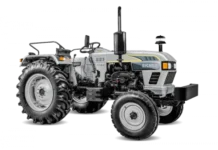A bucket truck may be required for any task requiring workers to install, remove, or repair anything high off the ground. A bucket truck is, at its essence, a utility vehicle outfitted with a hydraulic pole (boom) with a man-carrying bucket at its end. The bucket keeps the worker safe by lifting him so he can efficiently utilize his tools and complete his task safely.
Moreover, bucket trucks, which have long been employed to conduct typical aerial duties in industries, such as telecommunications, utilities, signs, construction, and forestry, are becoming much more popular. This is due to increasingly stricter OSHA laws requiring a reduction in the use of scaffoldings and ladders to accomplish different off-the-ground operations that may be risky and result in accidents.
Working in or near bucket trucks is a risky job. Inadequate safety procedures might result in harm or even death. Having to work at heights is frequent while operating lift trucks. Most utilities nowadays, such as internet, cable, and power, are installed, maintained, and distributed with the help of line trucks.
Many things may and do go wrong when operating in or near bucket lift trucks. The usual bucket has a maximum operating height of 40 to 60 feet, and any accident may result in damage or death.
This article covers the common issues that may occur in a bucket truck and the importance of using a repair service for your bucket truck.
1. Electrocution
One risk while working near bucket trucks is electrocution. Surprisingly, most electrocution cases do not involve utility staff. Employees who are untrained or irresponsible while using their vehicle to trim trees are more likely to get electrocuted. Moreover, electrocuted employees often fail to follow a critical safety rule: inspecting the area for safety concerns, such as overhead electrical wires.
2. Tip Overs
When operating a bucket truck, there is also the risk of the vehicle tipping over. The vehicle is outfitted with components that prevent it from tipping over, such as outriggers that act as the vehicle’s foundation while the lift operation is taking place and a tilt meter that measures the truck’s inclination about the surface it is operating on. These features are designed to ensure that the vehicle does not fall over.
The tilt prevention systems of the vehicle, if used improperly or not used at all, can cause the truck to topple over. The most typical reasons for the lift to topple over are as follows:
- Repositioning the vehicle while it is extended
- Overloading the bucket
- Deploying the lift on a slope that is too steep
3. Falling From the Bucket
Working in bucket trucks has some risks, one of the most prominent of which is the risk of falling out. Even if employees are positioned within the bucket while the lift is being operated, it is still possible for workers to lose their balance and fall, particularly while the lift is being moved into place.
Carelessness is the root cause of many injuries resulting from falls. If you correctly utilize the lanyard and safety harnesses, you won’t have to worry about this danger. The risk of employees tripping and losing their balance increases when tools and equipment are inappropriately positioned near the bottom of the bucket.
Also, when employees attempt to extend the reach of the lift by utilizing ladders and boards, this may sometimes result in workers falling to the ground below.
4. Traffic Accidents
Another risk of operating a bucket truck is colliding with oncoming vehicles. Many aerial works are carried out near major roadways. In these circumstances, the truck must take up a section of the road to situate the equipment.
Even though this business has safety rules, such as erecting visible road signs, some personnel fail to install sufficient warning devices. They become invisible to incoming cars and susceptible to a collision.
The Benefits of a Repair Service for Bucket Truck
The benefits of bucket truck repair include:
Peace of Mind
If you believe you may need a complete bucket truck replacement, having your vehicle inspected by professionals may save you the expense of purchasing a new truck. You get peace of mind when you rely on a professional mechanic who understands hydraulics and vehicle electronics.
Spend Less
When you keep a bucket truck operating in top condition, you’ll spend less on maintenance over the life span of your vehicle. Products have a reputation for quality, so it takes a knowledgeable shop to do repair jobs for a bucket truck. However, sometimes, a truck needs a full rebuild or a remount. It will be smart to work alongside a shop specializing in this brand.
Future Investments
Having a reliable, well-maintained bucket truck gives you peace of mind. These vehicles’ hydraulic components are as sophisticated and delicate as any other equipment, and they need the knowledge to repair correctly. A bucket truck, even if secondhand, is a piece of costly equipment. Some firms see them as future investments and treat them as such.
You don’t want to take any unnecessary risks when you’re suspended several stories in the air for an extended period. Unless you’re familiar with hydraulic repair and electrical systems, it’s probably not the best call to try to repair a bucket truck on your own.
Although there are many risks involving bucket trucks, safety guidelines also reduce the likelihood of such accidents. Before operating a bucket lift truck, every worker must pass safety training as ordered by OSHA. OSHA provides a forum for workers to learn the specifics of operating utility trucks.
Furthermore, although the job of working in a bucket is a potentially dangerous occupation, knowledge and avoidance of these dangers is simply a matter of following the guidelines initiated by OSHA. Be safe when operating or working near bucket trucks.



































































